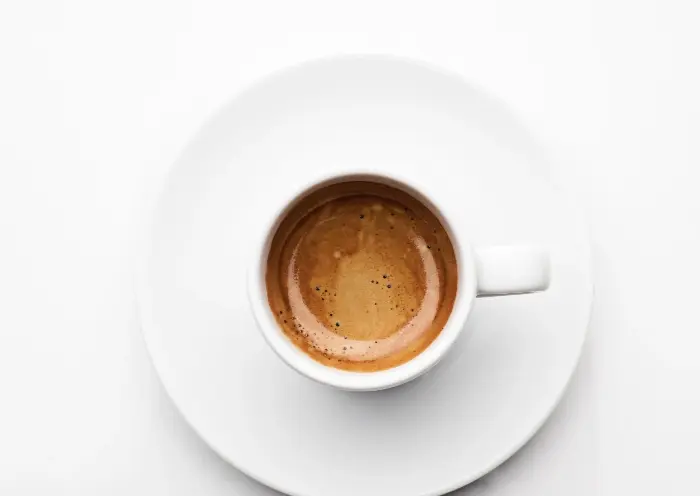Espresso is the heart of many coffee drinks. Its rich flavor and intense aroma make it a favorite among coffee lovers. But a common question lingers: Do espresso shots die? Some say they lose their quality quickly, while others argue they remain stable. This article explores the truth behind this debate.
What Happens After an Espresso Shot is Pulled?
When hot water passes through finely-ground coffee, it extracts oils, solids, and gases. These components create the signature crema and complex flavors of espresso. However, once the shot is pulled, chemical changes begin immediately.
The crema, a golden-brown foam, starts to dissipate. This is the most visible sign of change. As the gases escape, the texture becomes thinner. The flavors also shift, with bright acidity fading and bitterness becoming more pronounced.
The Science Behind Espresso Degradation
Oxidation is the main culprit. When coffee compounds interact with oxygen, they break down. This process alters the taste and aroma. Volatile compounds, which give espresso its fruity and floral notes, evaporate quickly. Meanwhile, heavier, bitter compounds linger.
Temperature plays a role too. A hot espresso shot cools rapidly, changing how we perceive its flavors. Warm coffee tends to taste sweeter and more balanced, while cooled espresso can seem harsh.
How Fast Does an Espresso Shot “Die”?
Many baristas claim that espresso shots expire within 10 to 30 seconds. This belief comes from the rapid changes in crema and flavor. However, the idea of a shot “dying” is somewhat exaggerated.
The taste changes, but the coffee doesn’t become undrinkable. Instead, it evolves. Some people even prefer the deeper, more bitter notes of an older shot. The key difference is in personal preference and intended use.
Factors That Affect Espresso Longevity
Coffee Bean Freshness
Freshly roasted beans produce more crema and vibrant flavors. As beans age, they lose gases, leading to flatter espresso shots. Stale beans result in shots that degrade even faster.
Grind Size and Extraction
A fine grind increases surface area, speeding up oxidation. Over-extraction pulls more bitter compounds, making the shot taste worse as it sits. Proper extraction balance helps maintain flavor stability.
Water Quality and Temperature
Hard water can make espresso taste dull. The right temperature (around 195–205°F) ensures proper extraction. If the water is too hot or too cold, the shot’s lifespan shortens.
Serving Method
Straight espresso changes faster than drinks with milk or sugar. Adding dairy slows oxidation, preserving some flavors. Iced espresso also lasts longer due to lower temperatures slowing chemical reactions.
Myths About Espresso Shots Dying
The “30-Second Rule”
Some say espresso must be consumed within 30 seconds or it’s ruined. This isn’t entirely true. While the shot changes, it doesn’t suddenly become bad. The rule likely started to encourage drinking espresso at its peak, not because it turns bad.
Dead Espresso is Undrinkable
A “dead” shot isn’t poisonous or disgusting—it’s just different. Many people enjoy aged espresso in milk-based drinks, where the changes are less noticeable.
Only Fresh Shots Are Good
While fresh shots have brighter flavors, older shots can still be enjoyable. It depends on the drink and personal taste.
How to Extend the Life of an Espresso Shot
Preheating the Cup
A warm cup keeps the espresso hotter longer, slowing flavor degradation. Ceramic or thick-walled cups retain heat better than glass or metal.
Minimizing Air Exposure
Covering the shot reduces oxidation. Some baristas place a small saucer over the cup to trap gases.
Using Fresh, High-Quality Beans
Fresh beans produce more stable shots. Lighter roasts retain acidity longer, while dark roasts develop deeper flavors that change less over time.
Proper Storage
If you must store espresso, keep it in a sealed container. Refrigeration slows oxidation but can dull flavors. Reheating is not recommended, as it often makes the coffee taste burnt.
Practical Applications in Coffee Shops
Serving Espresso Immediately
Most specialty cafes serve espresso right after pulling the shot. This ensures customers experience the full range of flavors.
Adjusting for Milk-Based Drinks
For lattes and cappuccinos, a slightly older shot can work well. The milk balances the stronger, bitter notes.
Batch Pulling for High Volume
Some busy cafes pull multiple shots ahead of time. While not ideal, it’s a trade-off for speed. Storing shots in thermal carafes can help preserve some quality.
Home Barista Tips
Pulling Shots On Demand
If possible, pull espresso just before drinking. This guarantees the freshest taste.
Experimenting with Timing
Try tasting the shot at different stages. Notice how the flavors evolve over minutes. This helps you decide your preferred drinking window.
Avoiding Over-Extraction
A well-balanced shot lasts longer. Adjust grind size, dose, and brew time to avoid excessive bitterness.
Conclusion
Espresso shots don’t truly “die,” but they do change. The vibrant flavors fade, and the texture shifts, but the coffee remains drinkable. Understanding these changes helps you enjoy espresso at its best—whether you prefer it fresh or slightly aged. The next time someone says an espresso shot is dead, remember: it’s not gone, just different.
Related topics:
Can You Use Dark Roast Coffee Beans for Espresso?
Can You Make Cold Brew with Espresso Beans?
How Much Caffeine is in a Shot of Espresso?


